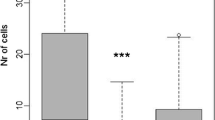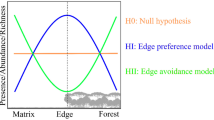Abstract.
We measured the nest density of stingless bees (Apidae, Meliponini) in undisturbed and logged-over dipterocarp forests in Sabah, northern Borneo, and evaluated hypotheses on proximate factors leading to the observed variation: population control mediated by (1) nest predation, (2) limitation of nest trees, or (3) food limitation. Per-area nest density varied twentyfold across 14 forest sites and was significantly affected by locality, but not by the degree and history of disturbance. Nest density was generally high in sites located in the Sepilok Forest fragment (mean 8.4 nests/ha), bordering mangroves or plantations. In contrast, nest densities in continuous forests were all low (between 0 and 2.1 nests/ha, mean 0.5 nests/ha). Yearly nest mortality was low (13.5–15.0%) over 4 years of observation and did not vary between forest localities, thus limiting the potential of nest predation (1) in creating the observed variation in nest density. The presence of potential nest trees (2), though positively correlated with nest density, explained only a minute fraction of the observed variation. Nest density was best explained by differences in the pollen resources (3) available to the bees (quantified by analysis of pollen in bee garbage). Across five selected sites the amount of nonforest pollen (from mangrove or crop plants) included in diets of Trigona collina was positively correlated with T. collina nest density. External pollen sources are a likely supplement to bee diets at times when little flowering occurs inside the forest, thus increasing overall bee carrying capacity. Pollen limitation was also indicated by direct measurements of pollen import and foraging activity of T. collina in three selected sites: Pollen traps installed at nests in high-density Sepilok captured significantly more corbicular pollen than colonies in low-density Deramakot. At the same time, morning foraging activity was also greater in Sepilok, indicating a regulatory increase in foraging in response to high pollen availability. We conclude that the abundance of stingless bees in forests in Sabah is chiefly dependent on the local availability of food resources. Bee populations strongly benefit from edge effects and increased foraging habitat diversity. Electronic supplementary material to this paper can be obtained by using the Springer Link server located at http://dx.doi.org/10.1007/s00442-001-0848-6
Similar content being viewed by others
Author information
Authors and Affiliations
Corresponding author
Additional information
Electronic Publication
Rights and permissions
About this article
Cite this article
Eltz, T., Brühl, C.A., van der Kaars, S. et al. Determinants of stingless bee nest density in lowland dipterocarp forests of Sabah, Malaysia. Oecologia 131, 27–34 (2002). https://doi.org/10.1007/s00442-001-0848-6
Received:
Accepted:
Published:
Issue Date:
DOI: https://doi.org/10.1007/s00442-001-0848-6




